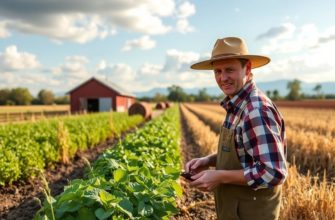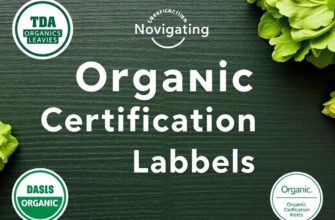Международное название:
Синонимы:
Характеристики:
| Сложность: | |
| Цикл развития: | |
| Световой режим: | |
| Режим полива: | |
| Температура: | |
| Почва: | |
| Ключевая черта: |
Цвет листвы
Цвет бутонов
Размеры цветка
Систематика:
| Домен: | |
| Царство: | |
| Отдел: | |
| Класс: | |
| Порядок: | |
| Семейство: | |
| Род: |
Cover cropping sounds like a fancy phrase reserved for organic farms and soil nerds, but it’s actually one of the most accessible, cost-effective ways to build resilient soil, cut input costs, and make your garden or farm more productive. Think of cover crops as a living mulch that works for you—quietly improving water infiltration, cycling nutrients, shading out weeds, and even feeding pollinators. Whether you’re stewarding a backyard plot, running a small vegetable farm, or managing acres of row crops, learning the why and how of cover cropping pays off in healthier plants and a healthier bottom line.
In this article I’ll walk you through what cover crops are, the many benefits they bring, how to choose species, and practical steps to get started. I’ll also cover timing, seeding methods, termination options, common mistakes to avoid, and ways to measure success. You’ll find tables and lists to make planning easier, plus real-world tips that experienced growers use. Read on—starting cover crops is a small change up front and a big payoff over time.
- What Is a Cover Crop?
- Why Cover Cropping Matters: Core Benefits
- Soil Health and Organic Matter
- Erosion Control and Surface Protection
- Nutrient Management and Nitrogen Cycling
- Weed Suppression
- Pest, Disease, and Beneficial Insect Management
- Water Management and Drought Resilience
- Biodiversity and Pollinator Support
- Climate and Carbon Sequestration
- Economic Benefits and Risk Management
- Common Cover Crop Species and What They Do
- How to Start: A Practical Step-by-Step Guide
- Step 1 — Define Clear Goals
- Step 2 — Site Assessment
- Step 3 — Timing and Planting Methods
- Seeding Rates, Mixtures, and Mix Design
- Terminating Cover Crops: When and How
- Timing
- Methods
- Managing Cover Crops During the Season
- Designing Cover-Cropping Plans for Different Systems
- Vegetable Garden (Backyard to Small Market)
- Small-Scale Organic Vegetable Farm
- No-Till Row Crop System
- Orchard and Vineyard
- Pasture and Grazing Systems
- Common Mistakes and How to Avoid Them
- Measuring Success: What to Track
- Practical Tools and Resources
- Case Studies: Real-World Examples
- Small Vegetable Grower — From Bare Beds to Healthy Soil
- Conventional Grain Farmer — Saving Nitrogen and Cutting Costs
- Vineyard — Pollinators and Erosion Control
- Frequently Asked Questions (Short Answers)
- Will cover crops steal water from my cash crop?
- Do I need special equipment?
- Can cover crops become weeds?
- Are cover crops compatible with no-till?
- Checklist: Getting Started This Season
- Further Reading and Where to Learn More
- Wrapping Up the Practical Stuff
- Conclusion
What Is a Cover Crop?
A cover crop is any plant grown primarily to protect and enhance the soil, rather than for harvest. These plants are often grown during times when cash crops aren’t present: over winter, between vegetable beds, or in fallow seasons. Cover crops come in many forms—legumes like clover and vetch, grasses like rye and oats, brassicas like radish and mustard, and mixes that combine multiple benefits.
Unlike a harvested crop, cover crops are a deliberate tool in a cropping system to prevent erosion, capture nutrients, add organic matter, and support beneficial microbes and insects. They can be as simple as a single species sown in a garden bed or as complex as a multi-species cocktail sown across an entire paddock. The point is that the soil never sits bare for long, and the cover crop becomes part of a cycle that builds long-term soil fertility and resilience.
Why Cover Cropping Matters: Core Benefits
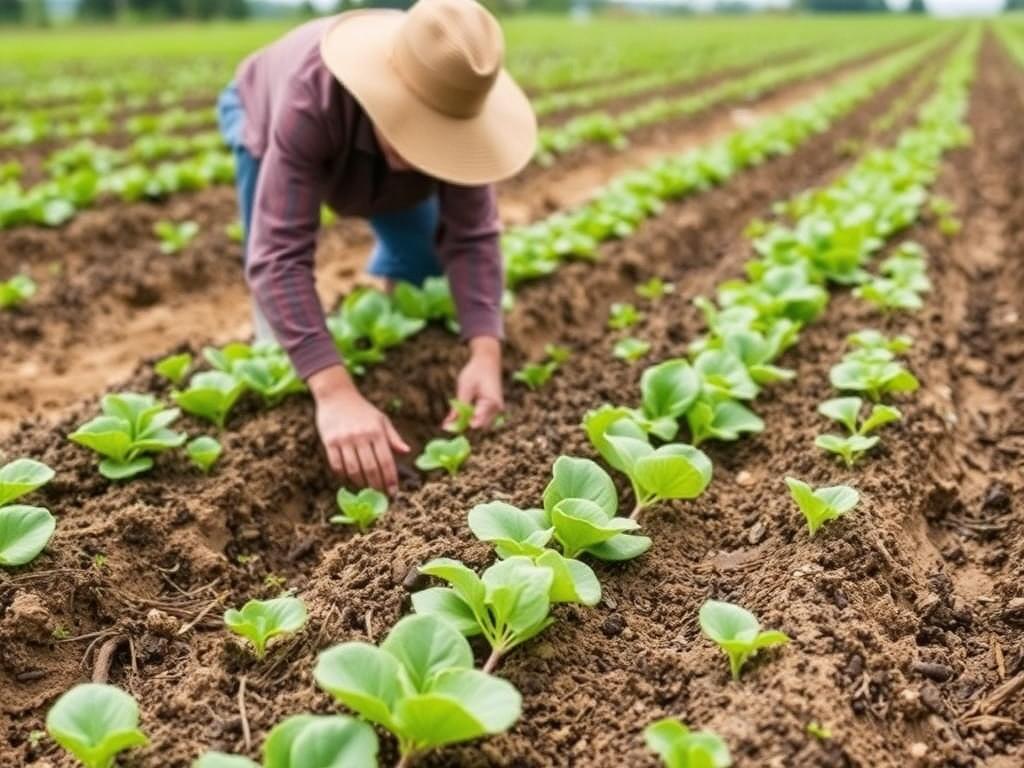
Cover cropping delivers a suite of interrelated benefits. Some are immediate and obvious, like reduced erosion and weed suppression. Others are slow-building but profound, like increased soil organic matter and improved water-holding capacity. Let’s unpack the main benefits so you can see how they stack up in your system.
Soil Health and Organic Matter
One of the biggest, most enduring benefits of cover crops is their ability to build soil organic matter. Roots deposit carbon in the soil while aboveground residue decays into organic material. Over time this improves soil structure—better aggregation, more pore space, and enhanced microbial life. Healthy soils hold water better, drain when needed, and provide a stable home for beneficial organisms like mycorrhizal fungi and nitrogen-fixing bacteria. You don’t just get a strip of green; you build a living, breathing ecosystem beneath your feet.
Erosion Control and Surface Protection
Bare soil is vulnerable to wind and water erosion. A living cover or recent residue can reduce soil loss significantly by slowing runoff, breaking raindrop impact, and protecting surface soil. This is especially important on slopes, bare fields in winter, or during heavy rains. Even a few weeks of cover in a critical season can prevent valuable topsoil from being carried away.
Nutrient Management and Nitrogen Cycling
Different cover crops affect nutrient cycles in different ways. Legumes (clover, vetch, peas) host symbiotic bacteria that fix atmospheric nitrogen, turning it into a form plants can use. Grasses (rye, oats) excel at scavenging leftover nitrogen and phosphorus before it leaches away. Brassicas can capture nutrients and even release biofumigant compounds that suppress some pathogens. By choosing and managing species carefully, you can reduce fertilizer needs and prevent nutrient loss to groundwater or downstream waterways.
Weed Suppression
A dense cover crop shades the soil and reduces the light available to weed seedlings. Fast-establishing species such as cereal rye or oats outcompete many annual weeds, and thick residues can physically suppress weed emergence when terminated. Some species also produce allelopathic compounds that inhibit germination of certain weeds. While cover crops won’t eliminate weeds entirely, they can significantly reduce your weed pressure and the need for hand-weeding or herbicides.
Pest, Disease, and Beneficial Insect Management
Cover crops play complicated roles in pest and disease dynamics, but they often tip the balance toward healthier systems. Flowering cover crops provide nectar and pollen that support beneficial predators and parasitoids—natural enemies of crop pests. Certain covers can interrupt pest life cycles by breaking up host availability. On the other hand, some covers might host pests if poorly timed or poorly chosen, so species selection matters. Overall, diversified systems with cover crops tend to have more biological control of pests.
Water Management and Drought Resilience
Cover crops can increase water infiltration by improving soil structure and porosity. Better infiltration reduces surface runoff and helps recharge soil moisture—vital for the next cash crop. Deep-rooted species (like tillage radish) can explore subsoil and create macropores that help roots and water penetrate—often called “bio-drilling.” In dry regions, the balance between water use by the cover crop and benefits to soil moisture requires careful timing and species choice.
Biodiversity and Pollinator Support
A field of flowering cover crops is habitat for bees, butterflies, beetles, and other beneficial insects. This biodiversity bolsters pollination services and food-web resilience. Even in small-scale gardens, flowering cover crops fill in late-season gaps and provide forage for pollinators when other flowers are scarce.
Climate and Carbon Sequestration
Cover crops help sequester carbon in soils by adding biomass and encouraging microbial processes that stabilize organic matter. While soil carbon dynamics are complex and influenced by many factors, consistent use of cover crops is among the best on-farm strategies to move carbon from the atmosphere into long-lived soil pools.
Economic Benefits and Risk Management
You might think cover cropping is an extra cost, but it often reduces input needs (less fertilizer, herbicide, irrigation) and improves yields over time—especially under stressed conditions like drought. Cover crops spread economic risk across seasons by protecting soil and stabilizing yields. For many farmers, the return on investment appears after a few seasons as soil health improves and input bills shrink.
Common Cover Crop Species and What They Do
Choosing species is the heart of cover cropping. Here’s a practical table comparing commonly used species and what they contribute.
| Species/Group | Main Benefits | Planting Window (general) | Termination Methods | Best For |
|---|---|---|---|---|
| Cereal Rye | Excellent biomass, erosion control, nitrogen scavenging, winter hardy | Fall (late summer to early fall) | Termination: mowing, roller-crimping, herbicide, tillage in spring | Farm fields, over-winter cover in temperate climates |
| Oats | Quick establishment, good suppression of weeds, spring-killed in cold winters | Fall or spring | Incorporation, mowing, natural winter kill | Vegetable beds, quick spring covers |
| Hairy Vetch | Nitrogen fixation, good mid- to late-spring biomass when mixed | Fall | Termination by mowing, rolling, or tillage in spring | Legume in mixes for nitrogen needs |
| Crimson Clover | Attractive flowers for pollinators, moderate N fixation | Late summer to fall | Mow/terminate in spring | Small farms, orchards, vegetable beds |
| Field Peas | N-fixation, good for spring planting mixes | Early fall or spring | Mow or incorporate | Cold-tolerant legume mixes |
| Winter Rye (Tillage Radish) | Bio-drilling, breaks compaction, scavenge nutrients | Late summer to fall | Winter-kill in cold climates or mow/terminate in spring | Compaction-prone fields, infiltration improvement |
| Mustard (Brassica) | Fast growth, potential biofumigation, weed suppression | Spring or fall (depending on climate) | Mow/terminate; residues can be incorporated | Pathogen-suppressive cover, short-term cover |
| Mixes (Cereal + Legume + Brassica) | Multiple benefits: N-fixation, biomass, deep roots, biodiversity | Fall or spring | Depends on species; often rolled/mowed or tilled in spring | Systems seeking resilience and multiple services |
How to Start: A Practical Step-by-Step Guide
Beginning a cover-cropping program involves planning, starting small, and learning through observation. Use this straightforward sequence.
- Assess your goals and constraints. What are you trying to achieve—erosion control, nitrogen, weed suppression, pollinator habitat, compaction relief? Consider timing windows, equipment, and available labor.
- Choose species or a mix that match your goals and your climate. Use the table above as a starting point and consult local extension services for regional recommendations.
- Plan your planting time. For many temperate zones, fall planting after the last harvest is ideal. In warmer climates, summer covers might be preferable.
- Calculate seeding rates and order seed. Buying seed blends designed for cover cropping can simplify decisions and often costs less than buying many separate bags.
- Prepare your seedbed and apply seed using an appropriate method (broadcast, drill, or interseeding). Good seed-to-soil contact improves establishment.
- Monitor growth, manage water if needed, and avoid overgrazing or heavy traffic on young covers.
- Terminate at the right time and with the right method for your subsequent crop. Timing is crucial—terminating too early loses benefits, terminating too late can create management headaches.
- Measure outcomes: soil tests, yield comparisons, and visual checks will guide adjustments for next season.
Step 1 — Define Clear Goals
Start by listing your top three goals for cover cropping. If nitrogen is your top priority, emphasize legumes. If erosion control and organic matter are prime, grasses or mixes with high biomass and deep roots are better choices. Your goals will drive species selection and management.
Step 2 — Site Assessment
Look at slope, drainage, soil type, previous crop residues, and typical weed issues. Sandy soils benefit from species that improve water-holding capacity; clay soils benefit from deep-rooted species for structure. Consider microclimates on your property—low spots may hold more water and allow different species.
Step 3 — Timing and Planting Methods
Timing is dictated by climate and cash-crop windows. In many temperate climates fall-sown covers are common: sow after harvest in late summer or early fall before a killing frost. In warmer areas, winter covers may need a different schedule or may be planted in late fall to avoid summer heat stress. Seeding methods include:
- Broadcast seeding — simple and feasible with hand tools or spreaders; works best with light harrowing or rolling to ensure contact.
- Drilling — more precise depth control and better emergence; ideal for larger areas.
- Interseeding — sowing cover crops into standing cash crops to gain early establishment before harvest.
- Mixing with manure or compost — combining seed with organic amendments can improve distribution and establishment for small areas.
Seeding Rates, Mixtures, and Mix Design
Seeding rates can vary widely depending on species and whether you prefer a dense monoculture or a diverse mix. Here are general principles:
- Use lower seeding rates for mixes so dominant species don’t overwhelm others.
- Reduce intended cash-crop seedbeds’ compaction—the more compact the seedbed, the better the seed-to-soil contact you’ll need.
- Consider “nurse crops” (fast grasses) that protect slower-growing legumes until they establish.
- Don’t overdo brassicas if you plan to plant brassica cash crops next season—residues can complicate rotations with related crops.
A typical mix for general-purpose fall cover could be: cereal rye 40–60%, oats 20–30%, hairy vetch 10–20% (by weight), adjusted for your goals.
Terminating Cover Crops: When and How
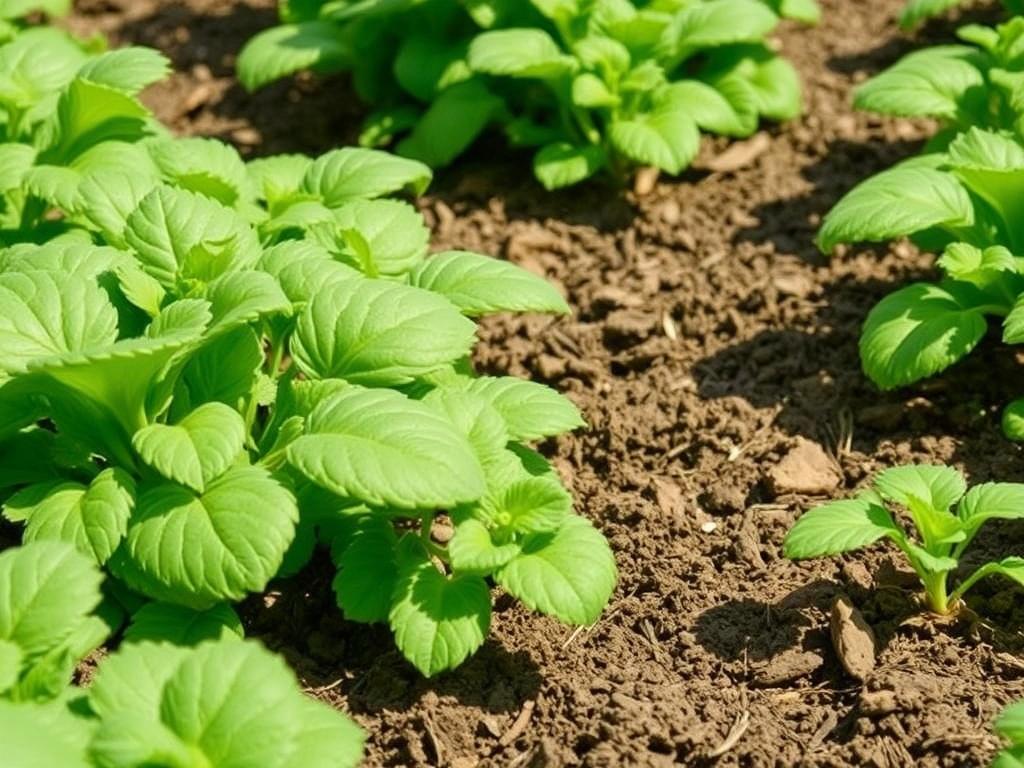
Termination is arguably as important as planting. Done correctly, you’ll capture the benefits while avoiding interference with the next crop.
Timing
Terminate based on both calendar and crop development stage. For cereal/legume mixes in spring, the typical window is around flowering or just before the cash crop is planted. Terminate before seed set if you don’t want volunteer covers to become weeds. If you want nitrogen release from legumes, wait a couple of weeks after flowering for residues to begin decomposing.
Methods
- Mechanical: Mowing, flail mowing, or roller-crimpers can terminate covers and leave a mulch. Roller-crimpers are especially popular in organic no-till systems for terminating cereal rye.
- Tillage: Disking or plowing incorporates residues into the soil—useful where crop residue needs to be buried or in systems that rely on tillage.
- Chemical: Herbicides can be used for quick, certain termination in conventional systems, but they carry environmental and resistance risks.
- Natural: Winter-kill works in cold climates with frost-sensitive species (e.g., oats), providing a simple route to termination without additional operations.
- Grazing: Livestock can both terminate and recycle biomass. Managed grazing integrates animals into the cropping system and returns nutrients via manure.
Managing Cover Crops During the Season
Once planted, your role is mostly observation and occasional intervention. Key considerations:
- Watch for pests and diseases—though cover crops often reduce overall pest pressure, certain pest species may use covers as hosts.
- Avoid overgrazing that stunts root growth; managed grazing is about balance.
- Manage water—irrigate if establishment is poor, but be mindful that some species will use substantial amounts of water.
- Keep records—dates, species, weather, and any interventions will help fine-tune your program next season.
Designing Cover-Cropping Plans for Different Systems
Different production systems require different cover-cropping approaches. Here are practical plans for common setups.
Vegetable Garden (Backyard to Small Market)
Plant a mix of oats + crimson clover in late summer or early fall. Let it grow until spring; the oats often winter-kill and provide mulch while crimson clover fixes nitrogen for early crops. Terminate by mowing and incorporation or by letting the residue suppress weeds and planting with a shovel or broadfork to make space for transplants.
Small-Scale Organic Vegetable Farm
Use multi-species mixes: rye + hairy vetch + radish + oats. Plant after main season harvests in late summer. In spring, use a roller-crimper or mow and transplant into the residue for a no-till approach. This builds organic matter and reduces weed pressure over time.
No-Till Row Crop System
Cereal rye or rye-vetch mixes are common. Plant in fall; roll-crimp in spring at anthesis (flowering) to create a thick mulch. Precision planting equipment that can handle heavy residue will be necessary.
Orchard and Vineyard
Under-row covers like white clover or native grass mixes help with weed management, reduce erosion, and support beneficial insects. Mow periodically to manage competition or use strip cultivation to maintain tree-row balance.
Pasture and Grazing Systems
Sow cover crops that also serve as forage (field peas, oats) to extend grazing seasons and provide soil benefits. Rotational grazing on cover crops can integrate livestock by providing high-quality feed and nutrient cycling.
Common Mistakes and How to Avoid Them
Cover cropping is low-tech but not foolproof. Here are frequent pitfalls and how to sidestep them.
- Wrong species for climate—check local recommendations to avoid crops that won’t survive your winter or will bolt in heat.
- Planting too late—late-sown covers may fail to establish sufficient roots and biomass.
- Overly aggressive mixes—some species can dominate; use balanced seeding rates to maintain diversity.
- Poor termination timing—terminating too late can delay planting and create residue management issues; terminating too early loses benefits.
- Neglecting equipment needs—roller-crimpers and drills have costs; plan for what you can manage with your tools.
- Expecting instant results—soil and ecosystem changes take seasons to accumulate. Monitor and be patient.
Measuring Success: What to Track
You don’t need a PhD to judge whether your cover-cropping is working. Use simple, repeatable indicators:
- Soil tests: organic matter, pH, and available nutrients over time.
- Infiltration tests: measure how quickly water soaks into the soil compared with bare plots.
- Visual indicators: root depth, earthworm activity, residue cover, and weed pressure.
- Yield and input tracking: note fertilizer, irrigation, and herbicide use and compare yield trends.
- Wildlife and pollinator observations: simple counts of bees or predatory insects can indicate biodiversity benefits.
Consistent data collected year-to-year is far more valuable than one-off measurements—trends tell the story.
Practical Tools and Resources
You don’t have to reinvent the wheel. Tools and resources can make cover cropping easier:
- Seed calculators and mix builders—many seed companies offer online tools to design mixes and calculate rates.
- Local extension services and NRCS offices—region-specific advice is invaluable for timing and species choice.
- Equipment providers—renting a drill or roller-crimper can be cheaper than buying if you’re just starting.
- Farmer networks and cooperatives—peer learning speeds up troubleshooting and creative solutions.
Case Studies: Real-World Examples
Concrete stories often bring ideas to life. Here are three short examples that illustrate different contexts.
Small Vegetable Grower — From Bare Beds to Healthy Soil
A two-acre organic vegetable grower in the Northeast started planting a fall mix of oats and crimson clover after seeing persistent soil erosion and increasing weed pressure. Within two seasons, the grower reported earlier planting dates in spring because soil dried and warmed faster, fewer hand-weeding hours thanks to improved weed suppression, and reduced need for sidedress nitrogen on leafy greens. The improved soil structure also meant less puddling after heavy rains.
Conventional Grain Farmer — Saving Nitrogen and Cutting Costs
A midwestern grain farmer with corn-soy rotation introduced cereal rye between crops. The rye scavenged residual nitrogen, preventing leaching during heavy rains, and created a thick residue that reduced early spring weed pressure. Over several years the farmer reduced applied nitrogen rates and observed a modest yield increase that covered the cost of seed. Adoption was gradual, but the combination of soil protection and lower input costs made it worthwhile.
Vineyard — Pollinators and Erosion Control
A small vineyard in California’s Central Coast incorporated flowering cover crops of mustard, clover, and vetch in alleyways. The covers provided habitat for beneficial insects, increased pollinator activity in adjacent hedgerows, and reduced erosion on sloped blocks during winter rains. The winemaker noticed improved vine vigor in some blocks, and the vineyard’s sustainability story resonated well with consumers.
Frequently Asked Questions (Short Answers)
Will cover crops steal water from my cash crop?
Yes, if a cover crop grows long into the season before termination, it can compete for water. Timing and species choice minimize this—use winter-killed species in dry climates or terminate early when moisture is limited.
Do I need special equipment?
No—start with broadcast seeding and hand tools in small areas. Larger fields benefit from drills and roller-crimpers. Renting or cooperatives can reduce initial costs.
Can cover crops become weeds?
Some species can volunteer if allowed to set seed. Proper timing of termination and avoiding species that are similar to future cash crops reduces that risk.
Are cover crops compatible with no-till?
Yes. Many no-till systems rely on cover crops for residue and weed suppression. Roller-crimpers are a common tool for terminating cereal covers in no-till systems.
Checklist: Getting Started This Season
- Define primary and secondary goals for cover cropping.
- Choose species appropriate for your climate and goals.
- Order seed early to get the best varieties and prices.
- Decide on seeding method and any equipment needs.
- Plan termination method and timing relative to your next crop.
- Record baseline soil tests and take photos for comparison.
- Start small—test 1–5% of your area before scaling up.
Further Reading and Where to Learn More
Local university extension services, NRCS technical guides, and dedicated cover crop organizations provide region-specific seed lists, seeding rates, and case studies. Seed suppliers and farmer-to-farmer networks can recommend proven mixes in your area. Don’t hesitate to reach out locally—what works in one county may need adjustments just a few miles away.
Wrapping Up the Practical Stuff
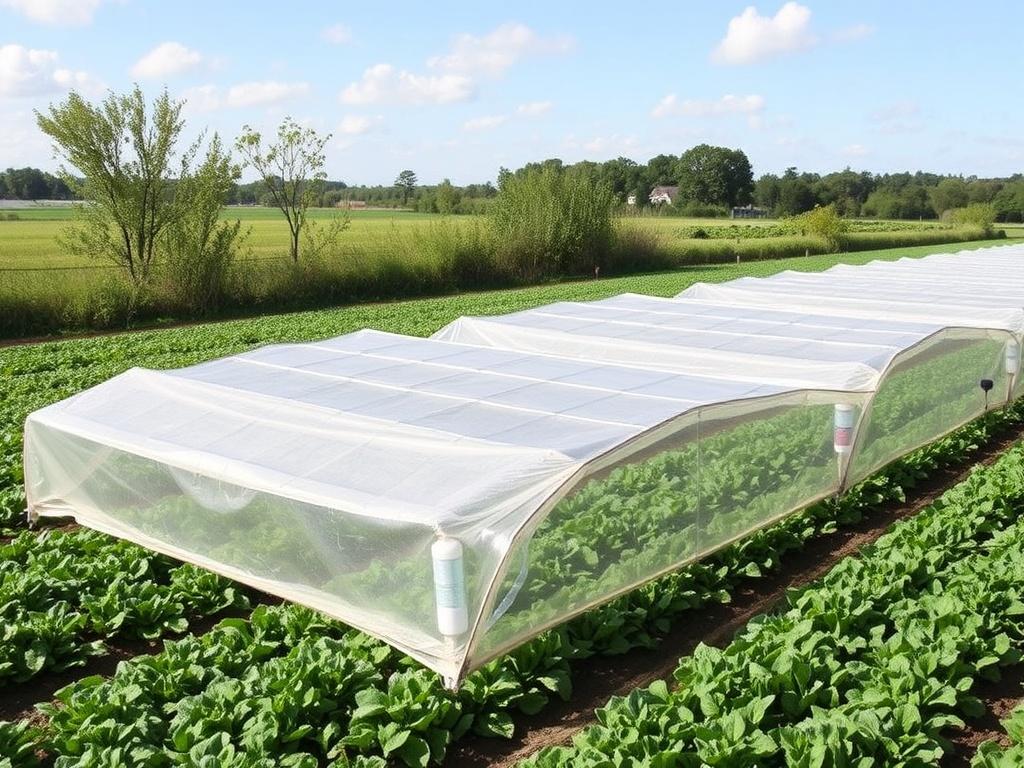
Cover cropping is both simple and nuanced. The core principle is straightforward: avoid bare soil, choose plants that address your system’s needs, and manage timing to capture benefits without creating headaches. The nuance comes in the choices—species mixes, seeding rates, termination tactics—which you’ll refine with experience. Expect some trial and error in the first seasons, but keep the long view: soil health and resilience compound over time.
Conclusion
Cover cropping is a powerful, flexible strategy that improves soil health, reduces erosion, recycles nutrients, supports biodiversity, and can lower input costs over time—whether you’re gardening in the backyard or managing large fields. Start by defining your goals, choose species suited to your climate and needs, plant at the right time, and terminate carefully; keep records and be patient as benefits accumulate season by season. With modest investment and thoughtful planning, cover crops become one of the best bets for long-term, sustainable productivity.
Оценивайте статью, делитесь материалом с друзьями в социальных сетях, а также высказывайте свое мнение в обсуждении ниже! ![]()


